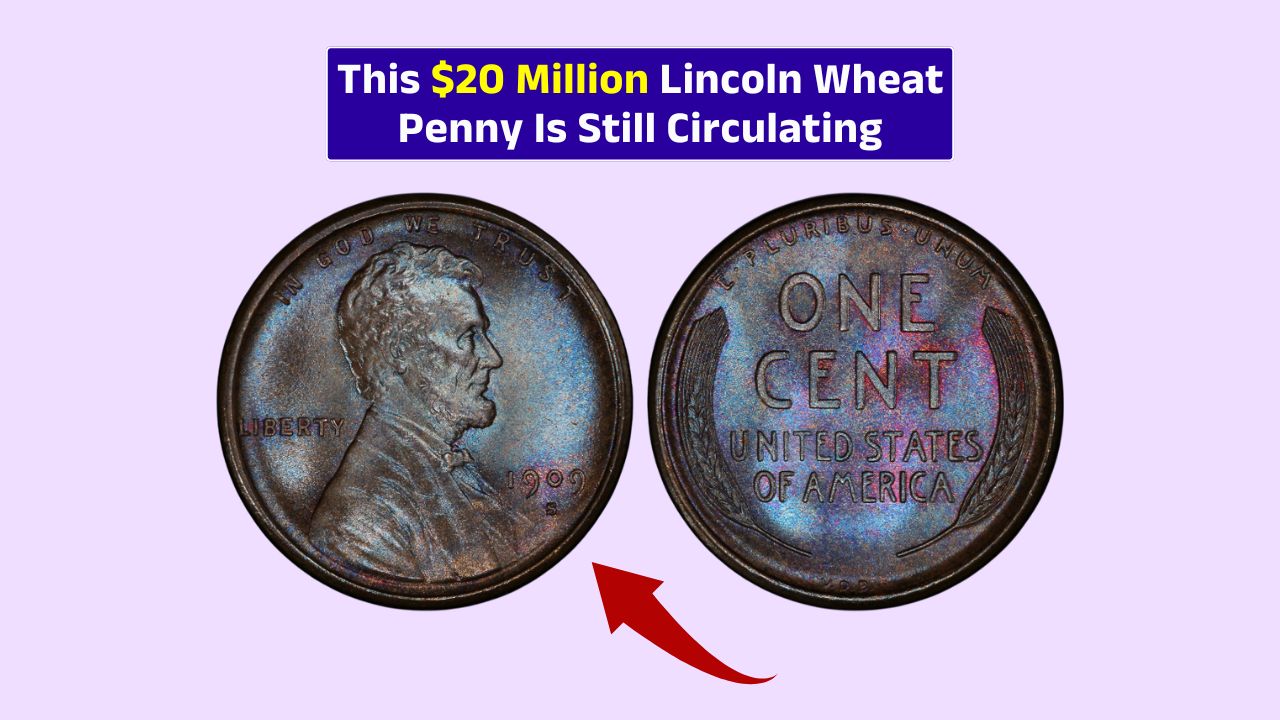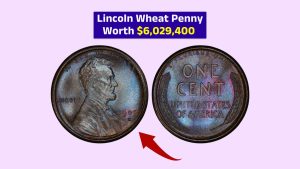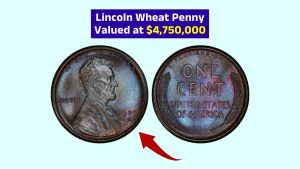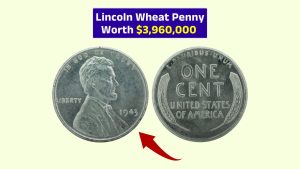Imagine finding a single penny that could change your life forever. That’s the unbelievable story behind one extremely rare Lincoln Wheat Penny, now rumored to be worth a jaw-dropping $20 million.
Even more surprising? This historic coin might still be out there, quietly hiding in someone’s spare change, an old coin jar, or even stuck in the back of a wallet. Here’s how to spot this life-changing coin — and what to do if you think you’ve found it.
Background
The Lincoln Wheat Penny, also known as the “Wheat Cent,” was minted in the U.S. from 1909 until 1958. It features President Abraham Lincoln on the front and two stalks of wheat on the back. It was the first coin to depict an actual historical figure and remains a collector favorite.
While most Wheat Pennies are only worth a few cents or maybe a couple of dollars to collectors, certain versions — especially those with mint errors — can be worth thousands, even millions. One such penny is rumored to be worth as much as $20 million today.
Rarity
Why such a high value? It comes down to rarity, history, and error.
The most well-known example is the 1943 copper Lincoln penny. That year, the U.S. Mint used steel instead of copper for pennies to save copper for the war effort. But a few copper blanks were accidentally used, creating one of the most valuable coins in the world. These have sold for over $1.7 million.
Now imagine a coin even rarer — maybe a prototype, an experimental mint run, or a one-of-a-kind error — and you can see how it might fetch up to $20 million in a private sale or auction.
Circulation
Here’s the wild part: this valuable Wheat Penny could still be circulating today.
Many rare coins have turned up in everyday life — at grocery stores, inside old jars, or even in pocket change from the bank. Someone may have unknowingly spent this coin years ago, and it might still be floating around.
That’s why coin collectors advise you to always look closely at your change, especially older pennies with the wheat stalks on the back.
Checklist
Want to know if your penny could be worth a fortune? Here’s what to check:
| Feature | What to Look For |
|---|---|
| Rare years | 1909-S VDB, 1914-D, 1943 copper |
| Magnet test | Steel sticks to a magnet; copper does not |
| Error markings | Double prints, off-center strikes, wrong metal |
| Unusual color/weight | May indicate a rare or experimental coin |
| Condition | Mint or uncirculated coins hold more value |
Using a magnifying glass and doing a magnet test can help you spot valuable pennies. A coin that doesn’t stick to a magnet in 1943? That could be the jackpot.
Action
If you find a penny that seems different, don’t toss it back in the change jar.
Keep it safe and get it checked by a professional coin appraiser or numismatic expert. Local coin shops, auctions, or coin shows are great places to get evaluations. You may even need advanced lab testing to confirm the metal composition — essential for high-value coins.
And whatever you do, don’t clean it. That could ruin its value.
Hopeful
The idea of a $20 million penny sounds like urban legend, but history shows us it’s possible. Rare coins have slipped into circulation before — and have made ordinary people rich overnight.
Whether it’s a minting error, a prototype, or just a forgotten treasure, the Lincoln Wheat Penny is living proof that real-life treasure hunts still exist.
So next time you check your change, take a second look. You just might be holding a piece of history — and a fortune in the palm of your hand.
FAQs
What year is the $20 million penny from?
It’s likely a rare 1943 copper or similar error penny.
How can I tell if my penny is rare?
Look for rare years, test with a magnet, and check for mint errors.
Should I clean a rare coin?
No. Cleaning reduces value. Keep it in original condition.
Where can I get a penny appraised?
Visit a coin dealer or numismatics expert in your area.
Can rare pennies still be found?
Yes, rare coins have turned up in everyday change.



